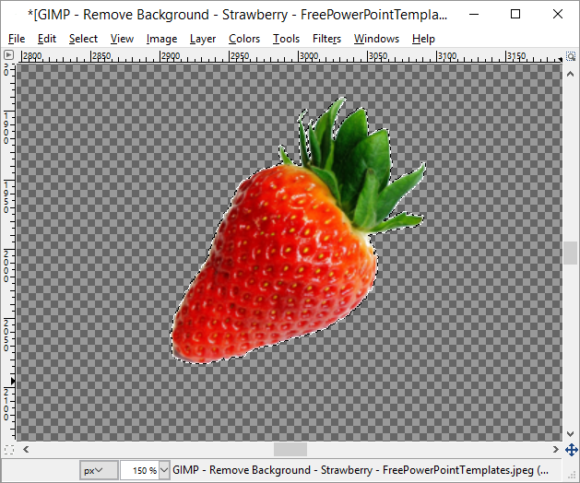

Layer>Erase background should make the background transparent.Click in a corner of the top layer, this should select the background.Set the tools to the "By Color" selector.Set Gimp background color from the background color of your image (#eeeeee).This create a new image, you can close the source one. Remove the optimizations: Filters>Animation>Unoptimize. However there is a script that makes this a bit faster if used right: For a single layer, that means Select the background,Select>Grow by two pixels, andColors>Color to Alpha` but this will be long for 68 layers. So the light gray things will remain opaque, and we want to remove the background but prevent Color-to-alpha to change the light gray things into be partially opaque pixels. Export as GIF, don't forget to tick the animation checkbox, and to force all frames to 40ms (the optimization sets a longer interval).This will create a new image, use Filters>Animation>Playback to check it. Image>Interleave layers>Interleave single layer (sprite mode) and select the white layer.
#GIMP REMOVE BACKGROUND SHADOW HOW TO#
Add a layer filled with white (or your new background color). In this GIMP photo editing tutorial, I show you 5 ways to remove anything from a photo in GIMP 2.10 I show you how to remove large objects, small objects, a.Dark grey can darken to black, but don't panic. Colors>Color to Alpha All layers and remove the background (color-pick, it should be #EEEEEE).
#GIMP REMOVE BACKGROUND SHADOW FULL#

Remove the optimizations: Filters>Animation>Unoptimize.But in a GIF, there are no partially opaque pixels, they are fully opaque or fully transparent, so you can't have shadows. In the picture above the shadows would be implemented as partially opaque pixels, that would slightly darken the pixels of the background. When you want a transparent background, you want to be able to show the picture over any background. Then a transparent background is not doable for this particular GIF. I can do by parts, but the real background also is grained due to the photo quality, and I don't know what operation to use to impose similar grain on the removed region. When shooting faces in harsh sunlight, hold a piece of white card or paper angled towards the face to reflect the light and soften the shadows.It depends if the light gray things are shadows or not. 5 How do I remove the shadow in this photo I tried fuzzy select on my actual image, the object has grey elements that make it difficult to distinguish properly.Alternatively, hold white tissue in front of the flash to diffuse it and make the light softer. This bounces the light off the ceiling or wall to create a more flattering effect. Without knowing that it can't solve for the alpha, it can only make a best guess. When you have to use a front-on flash hold a sheet of white paper or card below it or to the side. 1 No single step / tool will be sufficient solve the problem, because you somehow have to give the image manipulation program the 'information' that the color of the shadow is black, not just what the color of the background is.A flash attached to the camera will produce harsh shadows and glare on the subject. If possible, use an off-body flash so you can control the direction of the light.I personally prefer doing it with the lasso tool when possible but I know that some prefer the paths tool (bezier tool in Inkscape) while some others try the best of their luck with the fuzzy select tool (magic wand). This shoots three separate images at different exposures so you can pick the best (or merge them all in Photoshop). There is quite a few ways to remove a background from a picture using Gimp. If yours doesn't, try using the Exposure Bracketing option instead. Some mirrorless and other dedicated cameras also have an HDR mode.This will help to reduce contrast and shadows whenever the conditions call for it. When you're shooting on a phone turn on Auto HDR mode.It isn't easy, though, because you often don't have control over the light you're shooting in. Our article full of photography tips for beginners explains the principles of the "Exposure Triangle"-understanding that is the first step to getting it right every time. Nailing the exposure is one of the most important things in photography. Rather than trying to fix unwanted shadows in your photos, you're better off trying to avoid them in the first place.


 0 kommentar(er)
0 kommentar(er)
